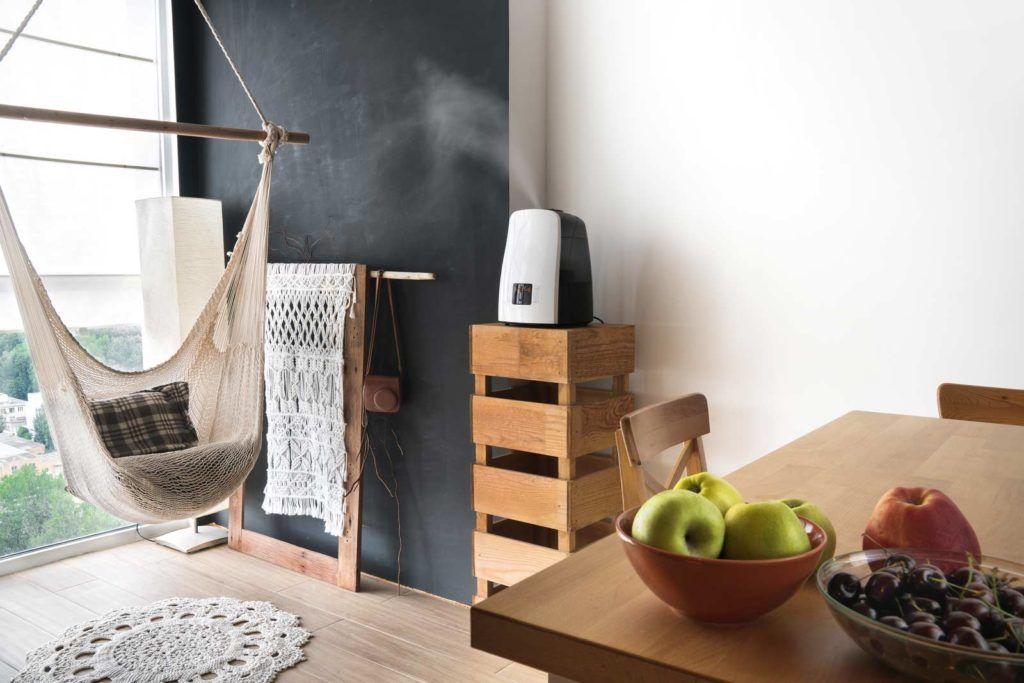Portable Humidifiers for Your Home

Most homes require added humidification, especially during the winter months, to keep relative humidity levels balanced and avoid dry air issues. Humidifiers are the best way to go about this, but in some situations, it may not be possible to install a whole-home humidifier. In this case, a portable humidifier is the way to go, adding moisture directly to the rooms where you need it!
Is a Portable Humidifier Right for Me?
While whole-home humidifiers are a great solution for many, in some situations, a portable humidifier may be a more appropriate solution. A portable humidifier may be right for you if:
- You rent your home. Whole-home humidifiers are permanently installed, which isn’t always a possibility for a renter, nor can you take it with you when you move.
- You live in a home that does not have a duct system. Portable humidifiers provide added moisture to your living areas when a duct system is not available for use with a whole-home model.
- You need added moisture in just a few areas, or temporarily. Portable humidifiers can be set up in the specific locations you need, when you need them. They’re a great solution for adding humidity to problem areas, or when someone is sick and can benefit from moisturized air greatly.
What Is a Portable Humidifier?
A portable humidifier works to add moisture into the air within the room or area it serves. While a whole-home humidifier is attached to your heating system and uses your home’s ductwork to distribute moisture across the home, a portable humidifier is one that operates independent of your home’s HVAC system, and can be moved about as needed to distribute moisture in desired areas. How they operate depends on the type of portable humidifier you have, discussed below.
Types of Portable Humidifiers
There are a few different options available for humidity creation with portable humidifiers. The main types are:
- Cool mist humidifiers: These units produce a cool vapor that moisturizes the air.
- Warm mist humidifiers: This type of portable humidifier produces a warm vapor from heated water, which is cooled and then released into the living area.
- Ultrasonic humidifiers: This portable humidifier model uses a metallic diaphragm, and its high-frequency vibrations create moisture droplets that are infused into your air.
- Evaporative humidifiers: An evaporative portable humidifier uses a dampened wick to create moisture, and a fan to disperse it.
Portable Humidifier Output
The output of a portable humidifier is how much moisture it can create, measured in gallons per day. Portable humidifiers range in output by the type and model, with outputs ranging from 0.5 to 9 gallons a day.
To determine what output is appropriate for portable humidifier use in your home, measure the space that the unit will serve. Select a unit with the output appropriate for the square footage of the area it will be used in. If your home is well ventilated, you will require less humidity than homes with poor ventilation, so consider this factor when sizing your new portable humidifier.

Caring for Your Portable Humidifier
Unlike whole-home humidifiers, portable humidifiers require regular maintenance and refilling to operate. Whole-home models have dedicated water supply lines, whereas portable humidifiers have a water reservoir that must be filled regularly so the unit can produce moisture appropriately.
How often you need to refill your portable humidifier water reservoir varies by factors including brand, size of the tank, the home’s dryness, and how often the humidifier runs. Larger output portable humidifiers may be able to go a few days without a refill while smaller units must be refilled sometimes multiple times per day. Review your owner’s manual for the manufacturer’s recommended refill frequency, and monitor your unit to determine how often it should be refilled based on your usage.
Portable humidifiers using a wick or filter will need to have these components replaced regularly, as they are not permanent. The filter fills with sediments and minerals from the water over time, which if not changed will impact the unit’s ability to produce desired moisture. Typically wick or filter replacement should be done once per humidification season, but if you have hard water or use the portable humidifier heavily, you may find it necessary to change these components more frequently.
Cleaning Your Portable Humidifier
Portable humidifiers need to be cleaned regularly and sanitized to ensure proper operation and healthy moisture output. The U.S. Consumer Product Safety Commission recommends that portable humidifiers with outputs of 5 gallons or less be cleaned daily and sanitized every week. Models with outputs over 5 gallons should be cleaned per the manufacturer’s recommendations and be sanitized every two weeks.
To clean your portable humidifier, follow these steps:
- First unplug the unit.
- Remove the portable humidifier’s filter and rinse with cool water. Do not use cleaners on the filter. Allow it to dry before replacing.
- Remove the water reservoir. Fill it with distilled white vinegar, coating all walls of the tank. Allow it to sit for 30 minutes or more.
- Scrub the walls of the water reservoir with a soft-bristled brush to remove mineral deposits.
- Drain the vinegar and rinse the tank with water.
- To disinfect the base, fill it with water and add a teaspoon of bleach for every gallon of water used. Let it soak for 30 minutes or more, agitating it throughout so that the walls of the base are coated.
- Drain the bleach solution and rinse the portable humidifier base with water.
- Reassemble your portable humidifier and fill the water reservoir properly before using.